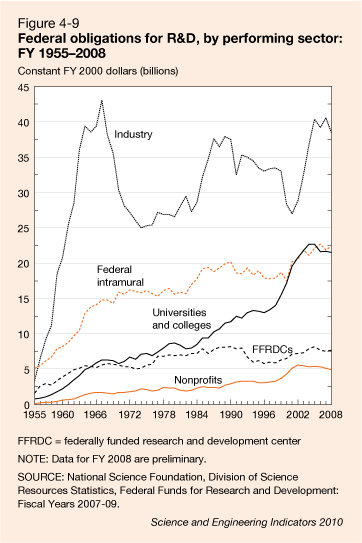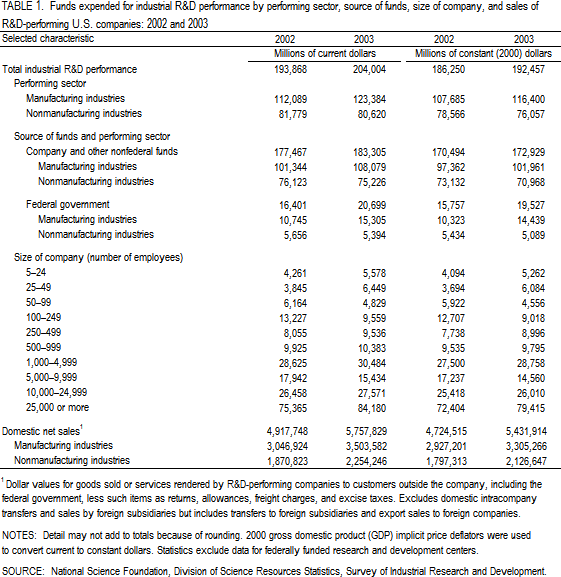A Primer on Recent Trends in Federal R&D Budgets
Post on: 16 Март, 2015 No Comment

With a new Congress now seated and a new appropriations cycle set to commence once again, AAAS has produced a short summary of some of the big trends in federal R&D budgets over the past several years. The goal was to keep this overview short, so there is quite a bit of detail that had to be left out (much of which can be explored on the historical data page ), but we hope it’s still a useful introduction. Text from the opening section is below; download the full primer for more.
WHY DOES GOVERNMENT FUND R&D?
Government has historically had a major hand in science and technology. There are a few simple rationales for why. The most immediate are government missions like national security, agriculture, environmental health, or infrastructure. To successfully fulfill these public missions requires interaction with science and technology.
But there is a broader rationale for discovery science and advanced technology. Generally, the societal benefits of R&D are greater than the private benefits of R&D. Due to knowledge spillovers, it’s difficult for the creator of new knowledge to reap all the benefits of that knowledge. This creates an allocation problem. As economist Joseph Stiglitz writes, “Knowledge can be viewed as a public good, and the private provision of a public good is essentially never optimal.”[i] Additionally, many worthy research projects are risky, with uncertain prospects for success or future utility, and may require a long-term commitment of resources and infrastructure. These qualities of the science enterprise lead to underinvestment by private industry, which in general is more focused on lower-risk research and product development with the promise of short-term results. This is why industry spends 80 cents of every R&D dollar on development, and only 20 cents on basic and applied research (for civilian science agencies, the ratio is reversed).
As a result, writes a recent National Academies panel on the American research enterprise, “Increasingly, government is called upon to fund high-risk, long-term research and some types of applied research, particularly proof-of-concept research, at least to the point where the risks of investment in such research are reduced to attract private-sector funding.”[ii] In this sense, the public research enterprise lays a foundation of knowledge, tools, and skills. At its best, it forms part of an ecosystem with universities and industry, contributing to progress in pharmaceuticals, semiconductors, food, aerospace, and other sectors through research output, human capital, and infrastructure and instrumentation.[iii] There is a track record of productive government interaction with outside actors, especially from within the defense system.[iv] With the globalization of science and the rise of R&D capacity in East Asia and elsewhere, such public-private interaction will become more important over time from a competitiveness perspective.
MAJOR BUDGET TRENDS
In the past 15 years, federal appropriations for total R&D have experienced three approximate phases (see Figure 1, which brings the data back to 1977). In the “first phase,” up to FY 2004, federal R&D increased rapidly, by 38.5 percent. The “second phase” ran from FY 2004 to about FY 2010, and was marked by little change in the overall budget, but a divergence between defense and nondefense R&D. The end of the second phase was marked by the one-time funding boost in the American Recovery and Reinvestment Act, in FY 2009. Since FY 2010, funding has entered a jagged third phase of decline and recovery.
Each of these phases reflects the politics of the day, to varying degrees. The first-phase increase, coinciding with the end of the Clinton years and the first few years under George W. Bush, had two major drivers. First, Department of Defense (DOD) R&D accelerated following the September 11 attacks. Second, the period marked the completion of the bipartisan budget doubling at the National Institutes of Health (NIH), which began in 1998 over concerns for public health. In addition, R&D budgets expanded at the National Science Foundation (NSF), the National Nuclear Security Administration (NNSA), the Office of Science in the Department of Energy (DOE), and the Departments of Agriculture (USDA) and Veterans Affairs (VA). R&D investment no doubt benefited from a federal surplus and a loosening of Congress’s position on discretionary spending limits at the time. Defense R&D increased by 49.7 percent over this time, while nondefense R&D grew by 26.6 percent.
In the second phase, funding for agencies and missions clearly diverged. The DOD R&D budget remained elevated and growing given national security concerns of the time. Meanwhile, the nondefense R&D budget began to erode. Funding did increase for some agencies, especially NSF, DOE Science, and the National Institute of Standards and Technology (NIST). All three of these agencies were targeted for budget doubling by America COMPETES, which placed the spotlight on the physical sciences, math, and engineering following the NIH doubling.[v] But even for agencies that gained budget ground, the rate of increase slowed appreciably from the earlier first phase. And some agencies, most notably NIH, lost ground due to sub-inflation appropriations, if not outright cuts, over this time. Total federal R&D in this period grew by only 2.9 percent after inflation. Defense R&D grew by 7.2 percent, while nondefense R&D declined by 2.4 percent.

In FY 2009, the American Recovery and Reinvestment Act (ARRA) contributed $20.2 billion to federal R&D, in FY 2014 dollars. This included $3 billion for NSF, $11.2 billion for NIH, and $3.2 billion for DOE, with other civilian science agencies dividing the remainder.
FY 2010 was the high water mark for inflation-adjusted federal R&D. In FY 2011, with deficits becoming a major political issue, Congress began cutting discretionary spending, and R&D was not immune. Thus, in the third phase, the R&D budget has declined by an estimated 15.4 percent, a more than $24 billion drop. Reductions in spending for downstream technology development at DOD have played a big role in this decline; the decline in civilian science and technology has been much smaller. Sequestration in FY 2013 has also played a big role in the decline, though R&D budgets had already been coming down for two years at that point. The overall reductions up to FY 2013 were larger than any other three-year period since the end of the space race.
Following sequestration, there has been a very modest recovery in most nondefense science and technology accounts. As a result, since FY 2010, nondefense R&D is only down by an estimated 4.9 percent, while defense R&D has declined by an estimated 24.1 percent. DOD science and technology specifically has declined by 11.8 percent.
The estimated distribution of R&D by agency in FY 2014 is shown in Figure 2. This distribution doesn’t tend to change radically year-to-year.
Continue Reading the Summary














